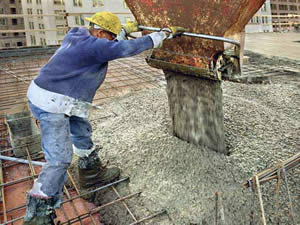After identifying the major economic sectors, an economic development element should articulate the strategies for growth. Creating these strategies in coordination with economic partners can assist in implementation. Below are a collection of strategies for economic sectors identified by Maryland counties, along with supporting data resources. Within each industry, it is important to consider the role of workforce development. It can be helpful to summarize workforce development actions and engagement strategies within a final portion of the growth strategies section.

Resource Industries
The long-term viability of agricultural and resource-based areas are essential to ensure that these industries can continue to thrive in Maryland. Economic development in Maryland includes much more than the activities within urbanized areas. Resource-based activity provides opportunities that cannot be found inside of our population centers and it is important to plan and strategically use the appropriate tools that foster the growth of these resource-based industries. For example, agricultural preservation areas safeguard some of the most productive Maryland soils from sprawl development.
Agriculture
Resources
Examples
Fisheries and Aquaculture
Resources- Maryland Department of Natural Resources
Examples
Forestry
 Resources
Examples
Resources
Examples
Mineral Extraction
Resources- Maryland Department of the Environment
Examples
Strategies for the commercial sector should seek to provide suitable locations for retailers, restaurants and other businesses. An effective way to achieve this is to incorporate commercial uses within a walkable environment that is easily accessible to customers.
Resources- Consult your local land use or economic development departments for commercial land inventory and vacancy rates.
- Maryland Department of Housing and Community Development
Examples
Industrial, Manufacturing
Many of Maryland’s jobs are found in small commercial, industrial and manufacturing operations. Land use should consider the needs of small and medium sized businesses and place-based opportunities within designated growth areas as opposed to focusing strictly on the attraction of large employers. Land use also should consider workforce accessibility. A diverse industrial sector will prove more resilient and stable throughout economic cycles that can be harmful to local economies that rely on a handful of employers. Consider streamlined procedures for permitting and industrial and commercial uses by right instead of conditional uses where appropriate.
Resources- Consult your local land use or economic development departments for industrial land inventory and vacancy rates
Examples
Freight
Sometimes hidden in discussions in an economic element is the role of freight. An integral part of any economy, freight movement should be planned for in relation to land use and transportation.
Resources- Maryland Department of Transportation
Examples

A growing economy will depend on an active construction sector. Strategies should be mindful of the role of infill and redevelopment projects, and the skills they require of local construction companies.
Resources- Refer to your Local Government Annual Report
- Building Permits for Residential and Non-Residential Uses
- Maryland Department of Planning
Examples
Tourism is an industry relevant to every community in Maryland. The natural beauty, rich history, and charm of communities attract visitors throughout the year, and tourism is a valuable economic activity. Strategies should leverage tools to capitalize on the assets of your community.
Resources- Maryland Office of Tourism
- Upper Shore Regional Council
- Maryland Historical Trust
Examples

For each sector of your community’s economy, the coordinated development of the local workforce can move the economy towards sustained prosperity. Strategies should focus on creating a meaningful collaboration among the private sector, educational institutions, and the local workforce investment board.
Resources
Examples